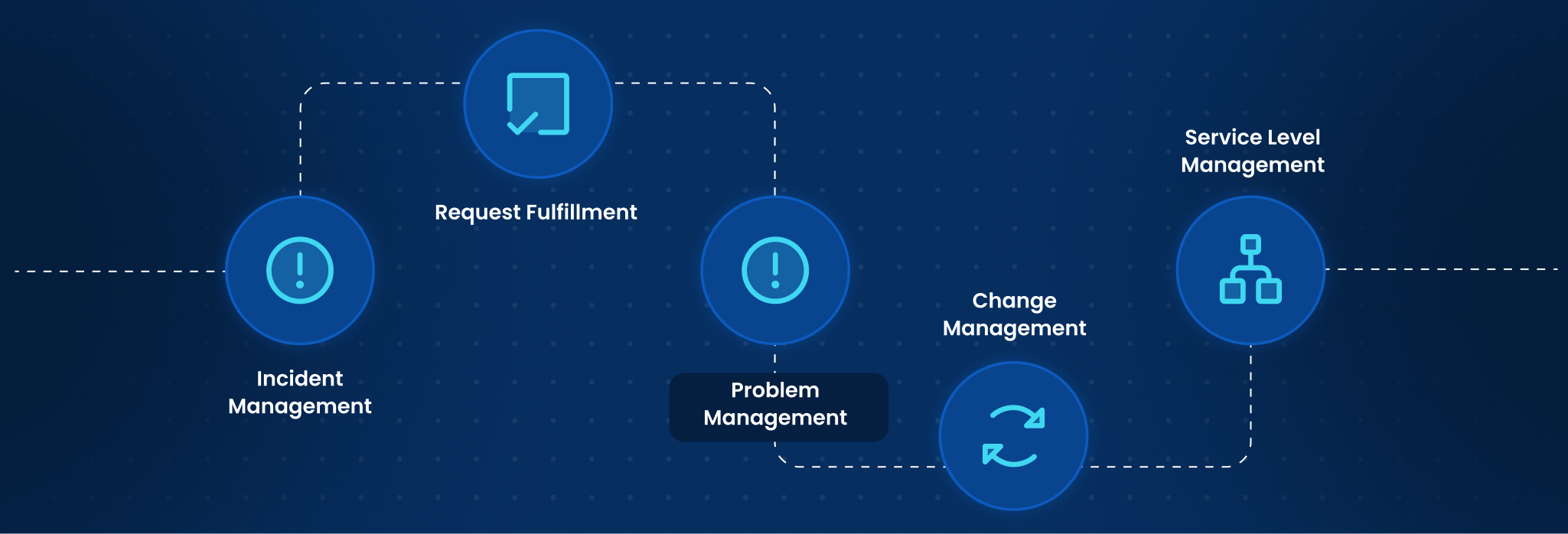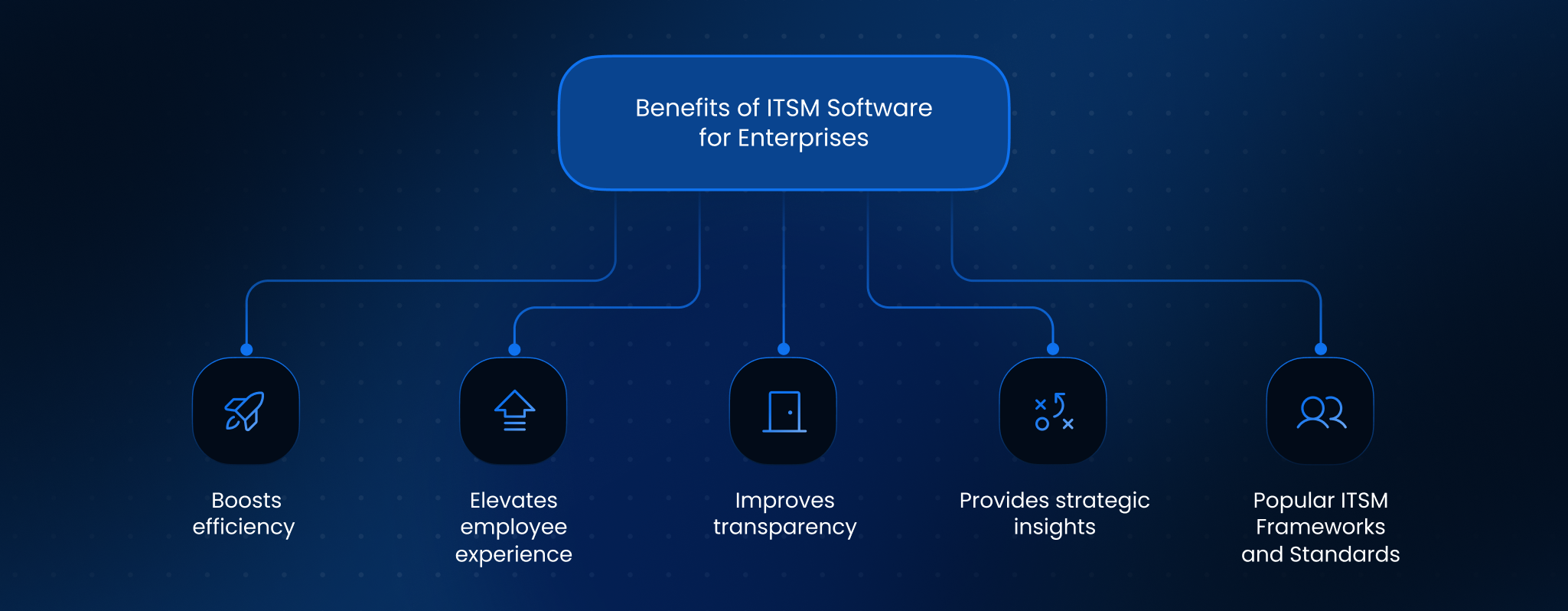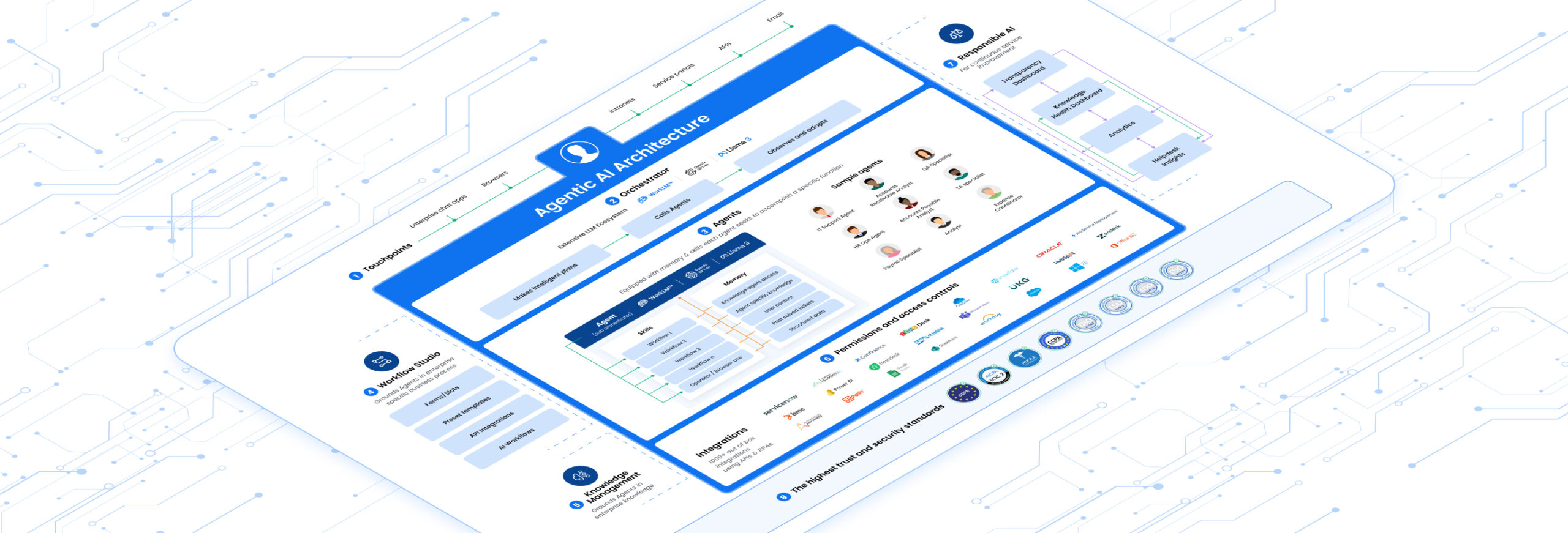Introduction
The backbone of any successful large American enterprise is its ability to keep the digital wheels turning smoothly. As a Chief Information Officer, Chief Technology Officer, or Technology Head, you know that keeping your company’s technology running flawlessly is more than just a task; it is a strategic imperative. In 2025, the critical tool empowering this mission is robust it service management software. This isn’t just about fixing what is broken; it is about building a proactive, intelligent, and seamless digital experience for every employee.
What Is IT Service Management (ITSM) Software?
At its core, it service management software is a system designed to help companies manage and deliver information technology services to their employees. Think of it as the ultimate control center for all things related to your company’s tech. From handling a forgotten password to deploying a complex new application, this software provides the framework to ensure every IT interaction is efficient, well-documented, and aligned with business goals. It moves IT beyond simply reacting to problems, enabling a structured and strategic approach to service delivery. Essentially, it helps orchestrate the entire lifecycle of IT services, ensuring they consistently meet the needs of the organization and its people.
Core Capabilities of ITSM Platforms
Modern it service management software comes packed with essential features that empower your IT teams. First, Incident Management helps quickly restore normal service operations after an unexpected interruption. Then, Request Fulfillment streamlines the process of providing standard services, like setting up a new laptop or granting access to a specific software. Problem Management goes deeper, identifying and eliminating the root causes of recurring incidents. Change Management ensures that all modifications to your IT environment are introduced in a controlled, coordinated manner, minimizing risks. Finally, a robust Service Level Management feature helps define and monitor the expected quality of your IT services. Each capability works together, ensuring your IT operations are efficient and predictable.
Benefits of ITSM Software for Enterprises
For large American companies, the advantages of sophisticated it service management software are substantial. Firstly, it significantly boosts efficiency. Automated workflows mean less manual effort and faster resolution times for common issues, freeing up your valuable IT talent for more strategic projects. Secondly, it elevates the employee experience. When tech issues are resolved quickly and services are easy to access, employees stay productive and satisfied, directly impacting the bottom line. Furthermore, clear processes and documentation improve transparency, so everyone knows what to expect from IT. Finally, the data collected by these systems provides invaluable insights, allowing you to make smarter decisions about IT investments and resource allocation. This strategic advantage is crucial in today’s competitive landscape.
Popular ITSM Frameworks and Standards
To provide structure and best practices, several frameworks guide the implementation and use of it service management software. The most widely recognized is ITIL (Information Technology Infrastructure Library). ITIL offers a comprehensive set of guidelines for delivering value through IT services, focusing on continuous improvement. Another important standard is ISO/IEC 20000, which specifies requirements for a service management system. It provides a formal certification for companies that meet its standards. While these frameworks offer different approaches, they all aim to help organizations optimize their IT service delivery, ensuring consistency and quality. Understanding these frameworks can help you choose an ITSM solution that aligns with your operational philosophy.
Leading ITSM Vendors in the Market
The market for it service management software is robust, with several major players offering diverse solutions. ServiceNow is a dominant force, known for its extensive platform capabilities that extend far beyond core IT service management into areas like human resources and customer service. Atlassian, with its Jira Service Management, is popular for its integration with development tools and its agile approach. ManageEngine offers a range of integrated IT management tools, including its ServiceDesk Plus. IBM also provides solutions, often catering to larger enterprises with complex requirements. Each vendor brings its own strengths, whether it is scalability, ease of use, or specialized integrations, so careful evaluation based on your company’s specific needs is essential.
AI in ITSM: Driving Automation and Efficiency
The conversation around it service management software in 2025 cannot happen without discussing artificial intelligence. AI is transforming how IT services are delivered, moving beyond simple automation to intelligent decision-making. Predictive analytics, for instance, can anticipate potential system failures before they occur, allowing IT teams to proactively address issues. Automated issue resolution, powered by machine learning, can fix common problems without human intervention. Furthermore, intelligent routing ensures that complex tickets land in the right hands the first time, reducing delays. AI is not just a feature; it is a fundamental shift that makes IT operations more agile, resilient, and responsive to the demands of a modern enterprise.
Choosing the Right AI Approach for Enterprises
When considering AI for your it service management software, the choices can seem overwhelming. One key consideration is whether to adopt a rules-based AI or a more advanced, agentic AI. Rules-based systems follow predefined instructions, which are great for simple, repetitive tasks. However, agentic AI takes a more dynamic approach. These intelligent agents can learn from interactions, understand context, and even make decisions to achieve a goal. For large enterprises with complex IT environments, an agentic approach offers greater flexibility and scalability, adapting to evolving needs without constant manual reprogramming. Selecting the right AI strategy is crucial for unlocking the full potential of your ITSM investment.
The Role of Agentic AI in Next-Gen ITSM
Agentic AI represents a significant leap forward in it service management software. Unlike traditional chatbots that follow a script, agentic AI powered by large language models acts as a true digital assistant. It can understand natural language, interpret intent, and even take proactive steps to resolve issues across various domains. Imagine an AI agent that not only helps an employee reset their password but also identifies a broader network issue, proactively alerts the relevant team, and then follows up to confirm resolution. This level of autonomy and intelligence drastically improves resolution times and enhances the overall employee experience, making IT support feel seamless and personalized. It is about empowering employees with immediate, intelligent assistance.
How Leena AI Elevates ITSM with AI-Driven Service Experiences
At Leena AI, we understand that traditional it service management software needs to evolve. That is why we are pioneering agentic AI solutions to transform how enterprises handle IT tickets. Our AI agents are not just glorified search engines; they are intelligent problem-solvers. For instance, if an employee reports an issue with their email, our AI agent can instantly diagnose common problems, suggest solutions, or even automatically trigger a fix. It can handle complex requests like ordering new hardware or granting software access, navigating various systems to fulfill the request end-to-end. This means faster resolutions, a dramatically improved employee experience, and IT teams freed from repetitive tasks, allowing them to focus on innovation. Leena AI is built to integrate seamlessly with your existing systems, providing a unified, intelligent service layer that spans IT, HR, and Finance, making every employee interaction efficient and intuitive. We help large US companies deliver a truly next-generation digital experience.
Common Pitfalls When Choosing ITSM Solutions
Selecting the right it service management software can be challenging, and several common missteps can hinder success. One major pitfall is focusing solely on features without considering how the software integrates with your existing technology stack. A disjointed system creates more problems than it solves. Another mistake is neglecting the user experience for your employees. If the system is difficult to use, adoption will suffer, and your investment will not yield its full potential. Furthermore, failing to plan for scalability can lead to issues as your company grows. Finally, overlooking the importance of advanced analytics and AI capabilities means missing out on crucial opportunities for efficiency and strategic insights. A thorough evaluation, keeping these pitfalls in mind, is vital.
Future Trends in ITSM Platforms
Looking ahead, the evolution of it service management software promises even more transformative changes. We anticipate a deeper integration of AI, leading to truly self-healing IT environments where systems can autonomously detect and fix issues. Hyper-personalization will become the norm, with AI agents tailoring support to individual employee needs and preferences. The move towards a unified “Experience Platform” will continue, consolidating IT, HR, and other service desks into a single, intelligent portal. We will also see increased emphasis on predictive analytics to move from reactive to truly proactive service delivery. For any technology leader, staying ahead of these trends will be key to maintaining a competitive edge and ensuring seamless operations.
FAQs About IT Service Management Software
1. What exactly is it service management software?
It service management software is a comprehensive system designed to help organizations efficiently deliver and manage their information technology services. It provides tools for everything from handling support requests to managing system changes.
2. How does it service management software benefit large enterprises?
For large enterprises, this software significantly improves operational efficiency, enhances the employee experience by resolving issues faster, provides valuable data for decision-making, and ensures IT services align with business objectives.
3. Is ITIL a type of it service management software?
No, ITIL is a widely adopted framework of best practices for IT service management. While many it service management software solutions are designed to support ITIL processes, ITIL itself is a set of guidelines, not a software product.
4. How is AI changing it service management software?
AI is revolutionizing it service management software by enabling features like predictive incident resolution, automated self-service options, intelligent routing of tickets, and personalized support experiences, making IT operations more efficient and proactive.
5. Why should I consider agentic AI for my company's it service management software?
Agentic AI offers a more advanced and dynamic approach than traditional AI. It can learn, understand complex contexts, and proactively resolve issues across various IT and business functions, leading to superior efficiency and employee satisfaction.
6. Can it service management software be used beyond IT?
Yes, modern it service management software is increasingly being adopted as an Enterprise Service Management (ESM) solution, extending its benefits to departments like Human Resources, Finance, and Facilities for streamlined service delivery.
7. What is the most important factor when choosing new it service management software?
While features are important, the most critical factor is how well the software integrates with your existing systems and how effectively it can improve the overall experience for your employees and IT staff.















